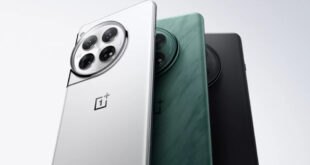
T-Mobile and Sprint have been playing footsie for years, and the pair announced their impending merger last year. The deal, valued at $26 billion, is still winding its way through regulatory review, but recent leaks suggest it won’t be the slam dunk the carriers had expected. With the deal in danger, Sprint is making it very clear to investors just how dire its situation has become.
Before T-Mobile can complete its acquisition of Sprint, the deal needs approval from the FCC and the Department of Justice. Recently, sources inside the DOJ claim that the agency’s antitrust division plans to deny the merger as it is currently structured. That could cause a major delay as the deal is renegotiated or the possibility that the deal collapses.
Sprint’s situation is not improving, and it seems spooked by the position of the DOJ. The carrier announced another significant drop in postpaid subscribers, down 189,000 in the last quarter. Its net losses also fell more than analysts expected. Sprint has pulled back on the steep discounts that have kept it afloat in recent years as it tries to hold out until the merger goes through. Investors are also steering clear of Sprint. The carrier tells analysts that its only hope is the T-Mobile deal.
How did Sprint get to this point? The carrier was among the largest mobile communications in the world when it acquired Nextel in 2005. The combined Sprint-Nextel network offered expansive 2G EVDO coverage and push-to-talk (PTT) services, making it appealing to both consumers and businesses. However, Sprint was slow to roll out 3G while Verizon prioritized that deployment, correctly betting that data services would drive customer acquisitions in the future. Meanwhile, ATT picked up iPhone exclusivity in 2007.
Sprint had settled in a distant third place at the dawn of 4G, and it was determined not to be late to the party again. It placed a bet on WiMAX as the 4G standard in 2008, but LTE quickly became the favorite among other carriers. Sprint’s work on WiMAX continued until 2011 when it threw in the towel and moved to LTE. Sprint never really recovered from that setback, and the acquisition by SoftBank in 2013 probably hurt it even more. Sprint’s network has not improved as quickly as the competition, in part thanks to a parent company that hasn’t bothered to invest in it.
Sprint has a mountain of spectrum that could be ideal for 5G deployments, and that’s what T-Mobile wants. If the deal doesn’t go through, Sprint would get a modest breakup fee from T-Mobile. That might be enough to keep it going until another suitor came along. It’s unlikely Sprint would go out of business — someone would scoop it up because it has all the right assets to be a competitive mobile carrier. It just doesn’t have the money to bring it all together.
Now read:
- Ajit Pai Won’t Brief Congress on Carrier Privacy Violations During Shutdown
- ATT Plans to Fire 7,000 People Despite Tax Breaks, Net Neutrality Repeal
- T-Mobile, Sprint, and ATT Caught Selling Location Data to Bounty Hunters
 #Bizwhiznetwork.com Innovation ΛI |Technology News
#Bizwhiznetwork.com Innovation ΛI |Technology News




